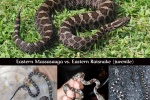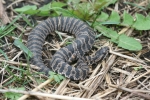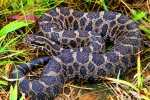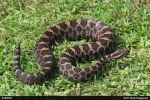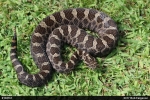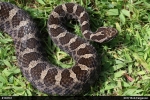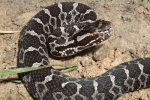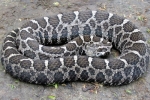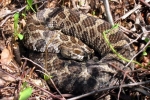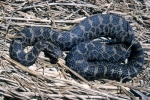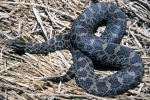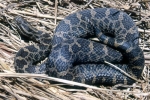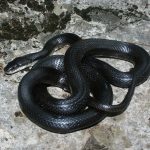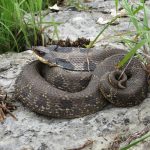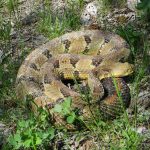Eastern Massasauga - Venomous
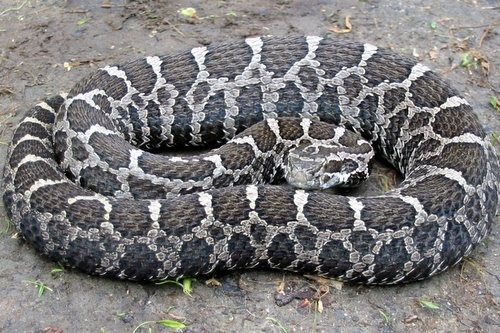
Scientific Name: Sistrurus c. catenatus
Special Note*: Size: 18-40 inches (45-100 cm) in length
Status: Endangered Species
PAHERP Resource: Buzz in the Prairie
Habitat:
Swamps, marshes, bogs, peat lands, wet meadows, prairie lands, low lying poorly drained soil, dry open fields with lots of vegetation. The habitat will vary with seasons. Spring & fall they can be found in the wetter habitats, and summer they may be found in dry habitats.
Description:
Small to medium rattlesnake that unlike most rattlesnakes, has 9 enlarged scales on top of the head. Stocky with a well-developed rattle, the Eastern Massasauga is brownish gray with rounded dark blotches on its body.
tail has approximately 3 to 6 dark brown or black rings and tipped with a small rattle. A dark bar extends from eye to rear of the jaw. Scales are keeled and the anal plate singular. The belly is black and can be mottled with white. The young are approximately nine inches long when born and have a yellow-tipped tail with a “button" rather than a fully-developed func¬tioning rattle. Inhabits sphagnum bogs and floodplains in a few counties in western Pennsylvania. Eats lizards, rodents, and frogs. *** This species is NOT found outside of its current range. See confused species at the bottom of the page. One of the most commonly confused species is a juvenile Eastern Ratsnake.***
- The dorsal background is grey to greyish brown.
- The dorsal has rows of large irregular shaped middorsal blotches in conjunction with three rows of small round spots on both sides of the body. (some individuals may be stripped)
- The blotches are dark brown to black with a black border and a white outline.
- The tail has alternating dark and light bands that are ringed rather than blotched.
- The ventral is dark grey to black and may be mottled with grey to black blotches.
- The head has two dark light bordered stripes on each side that extend from the eye to the neck and a mid-dorsal stripe extending posteriorly on the back of the head. The top of the head has varying dark blotches.
- Medium-sized, stout-bodied species.
- The head is large, flat and triangular in shape.
- The head is distinct and set off from the body by a narrow neck.
- Pupils are vertically elliptical.
- Deep set pits between the eyes and nostrils.
- The dorsal scales are strongly keeled.
- Similar to adults
- 21-27 scale rows at midbody.
- 23 scale rows at anterior.
- 17-19 scale rows at posterior.
- 139-160 ventral scales
- 19-36 subcaudals scales | Single row of subcaudals
- Higher than wide rostral scale
- 2 internasal scales
- 2 prefrontal scales
- 1 large frontal scale
- 2 supraocular
- 2 pariental scales
- 2 nasal scales
- 1 loreal scale
- 1-2 subocular scales
- 3-4 postocular scales
- 11-12 supralabials
- 11-13 infralabials
- The anal plate is undivided


References:
- Hulse, C. and McCoy C. J. and Ellen Censky ,1998. Amphibians and Reptiles of Pennsylvania and the Northeast. 356-359pp.
- Ernst, Carl H. and Ernst, Evelyn M. ,2003. Snakes of the United States and Canada. 551-557pp.
- Wayne Fidler
- Tom Diez
- Jason Poston
- Brandon Ruhe
- Bob Ferguson
- Don Becker (psychoticnature.com)
Heads up!
Please contribute your observation of this and other herps to the Pennsylvania Amphibian and Reptile Survey. Your help is needed.
